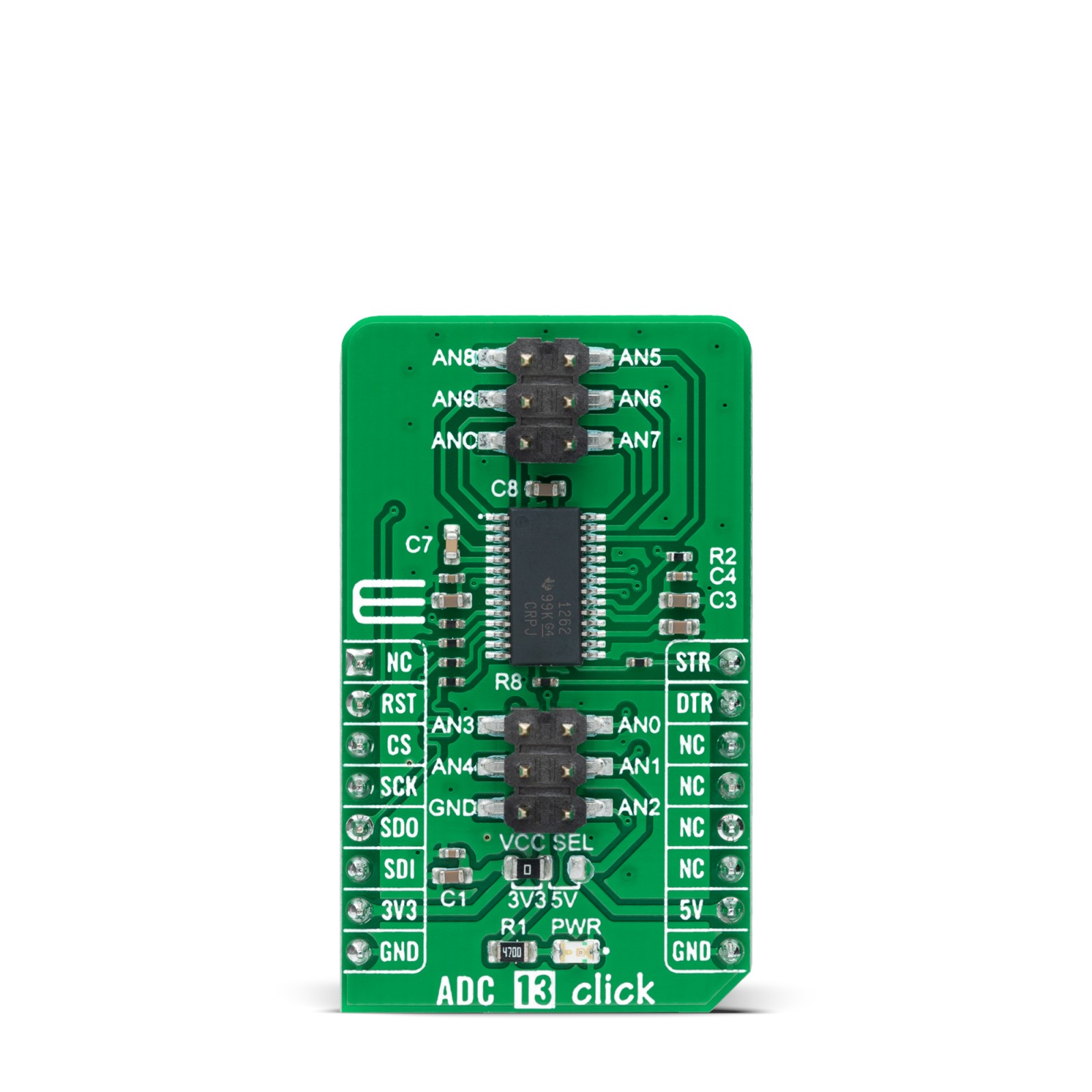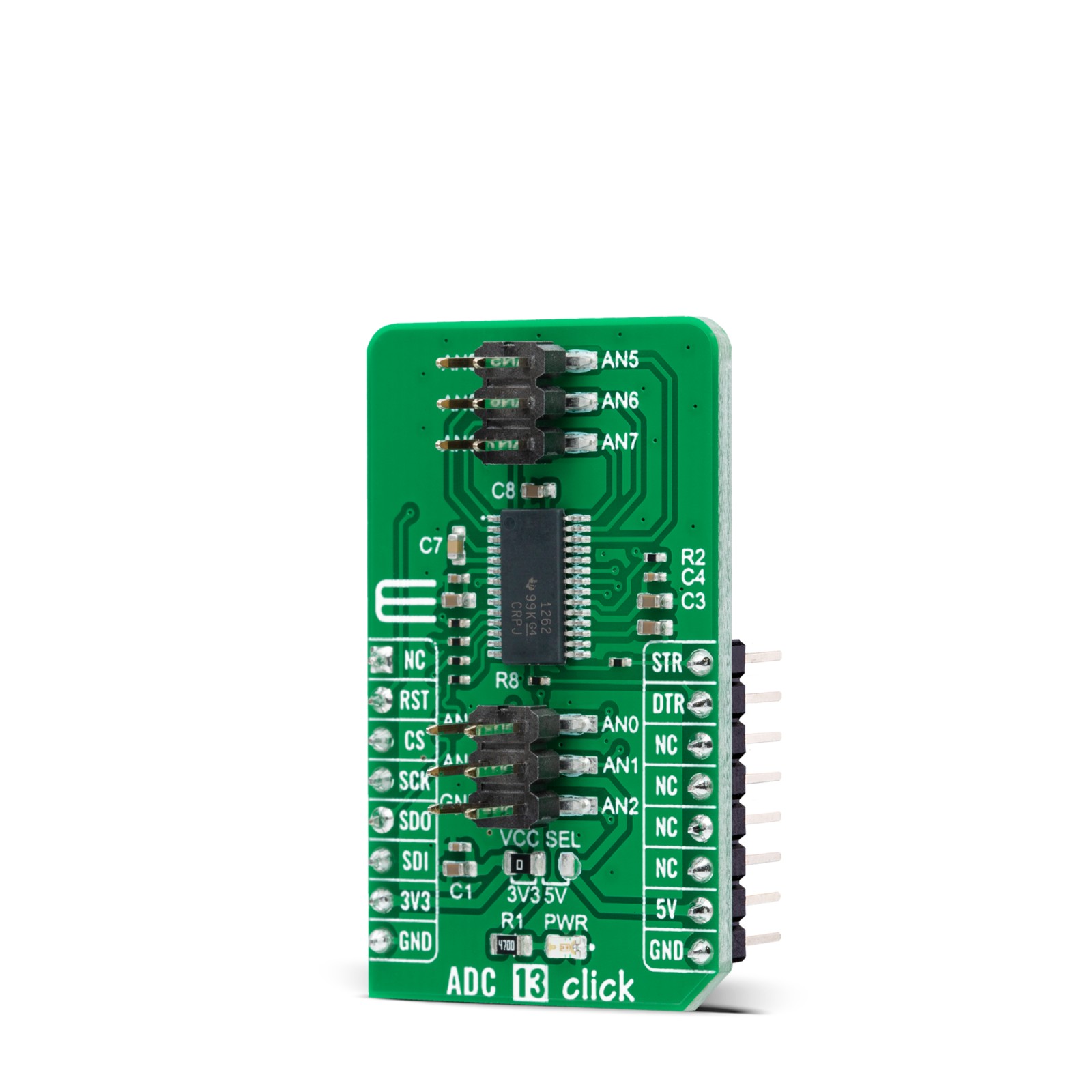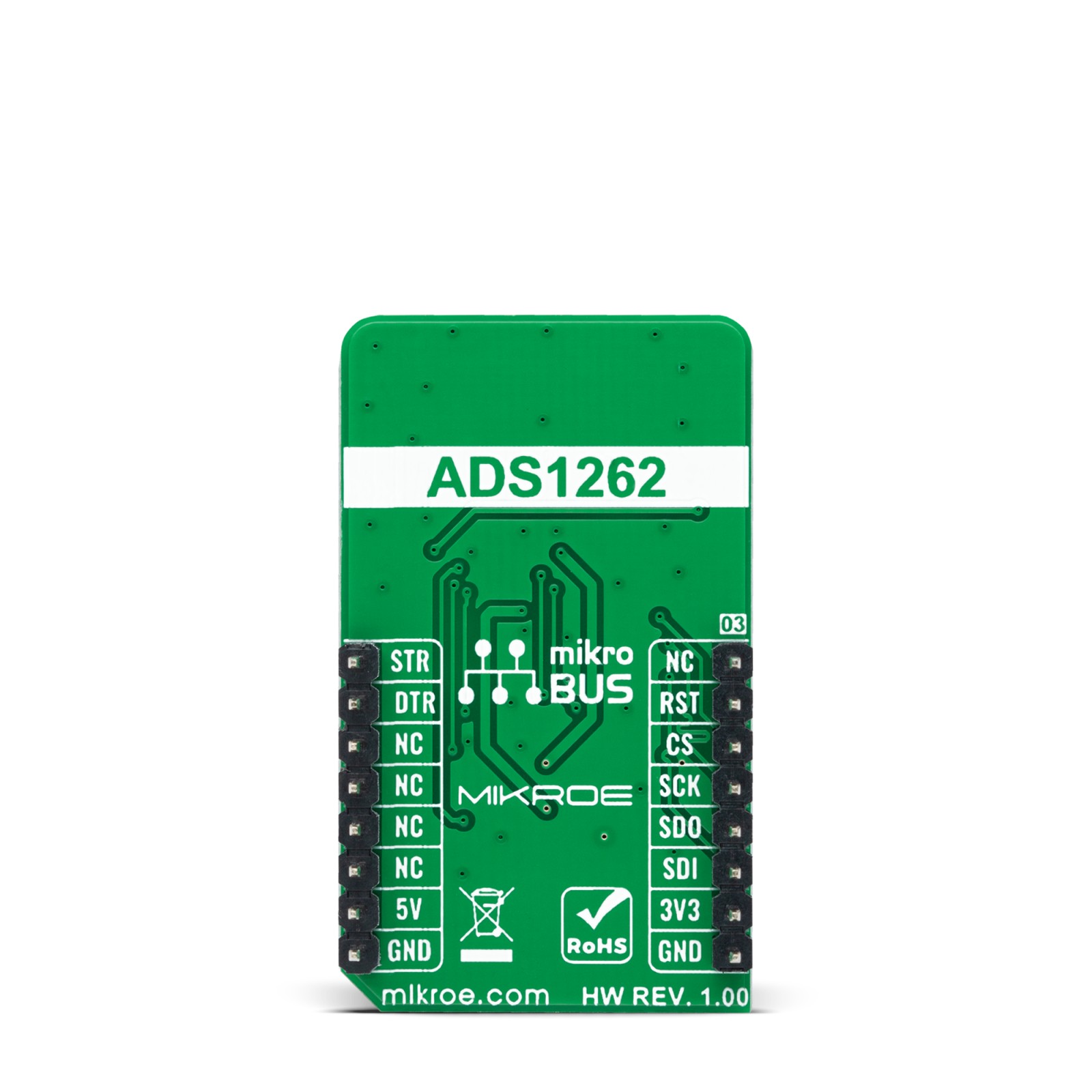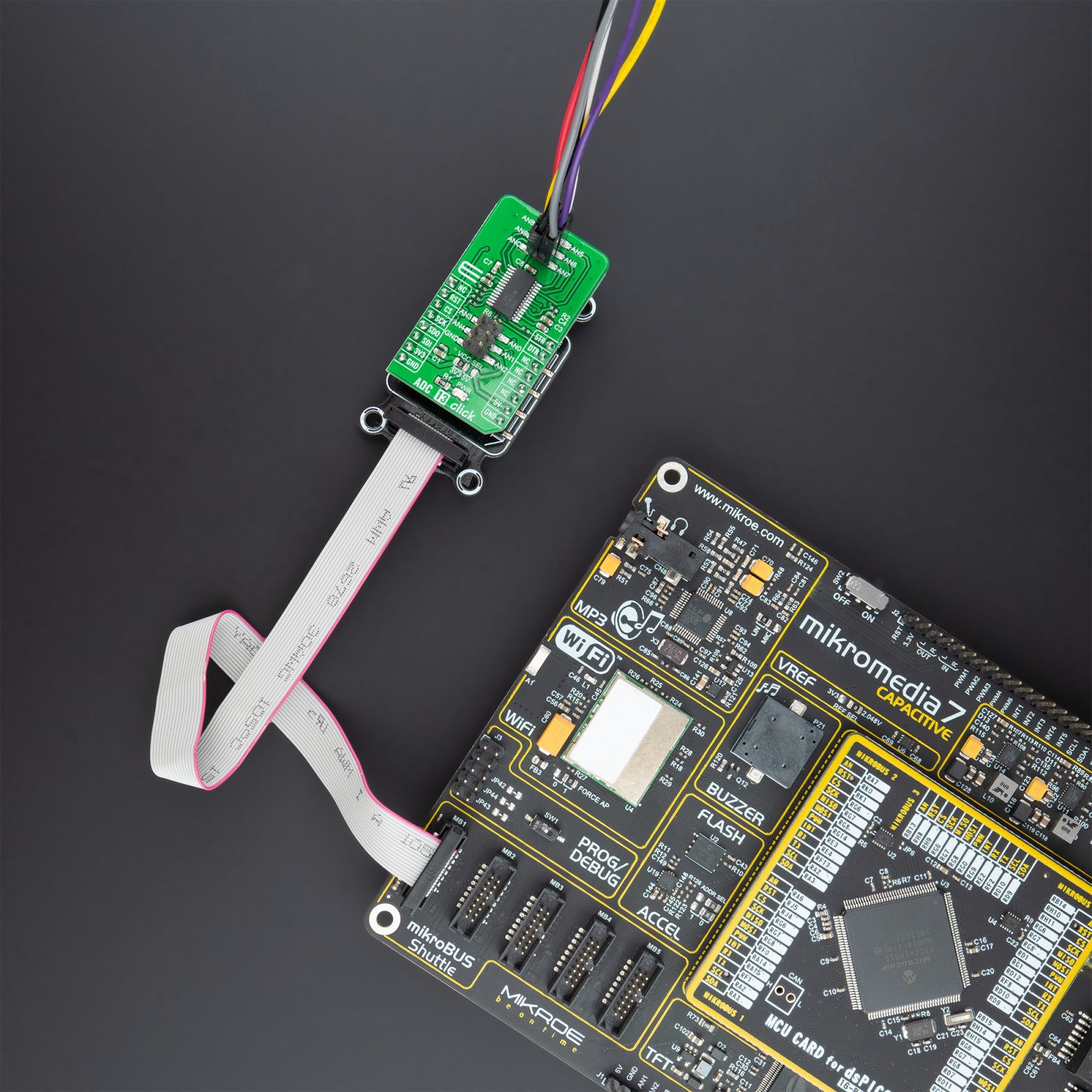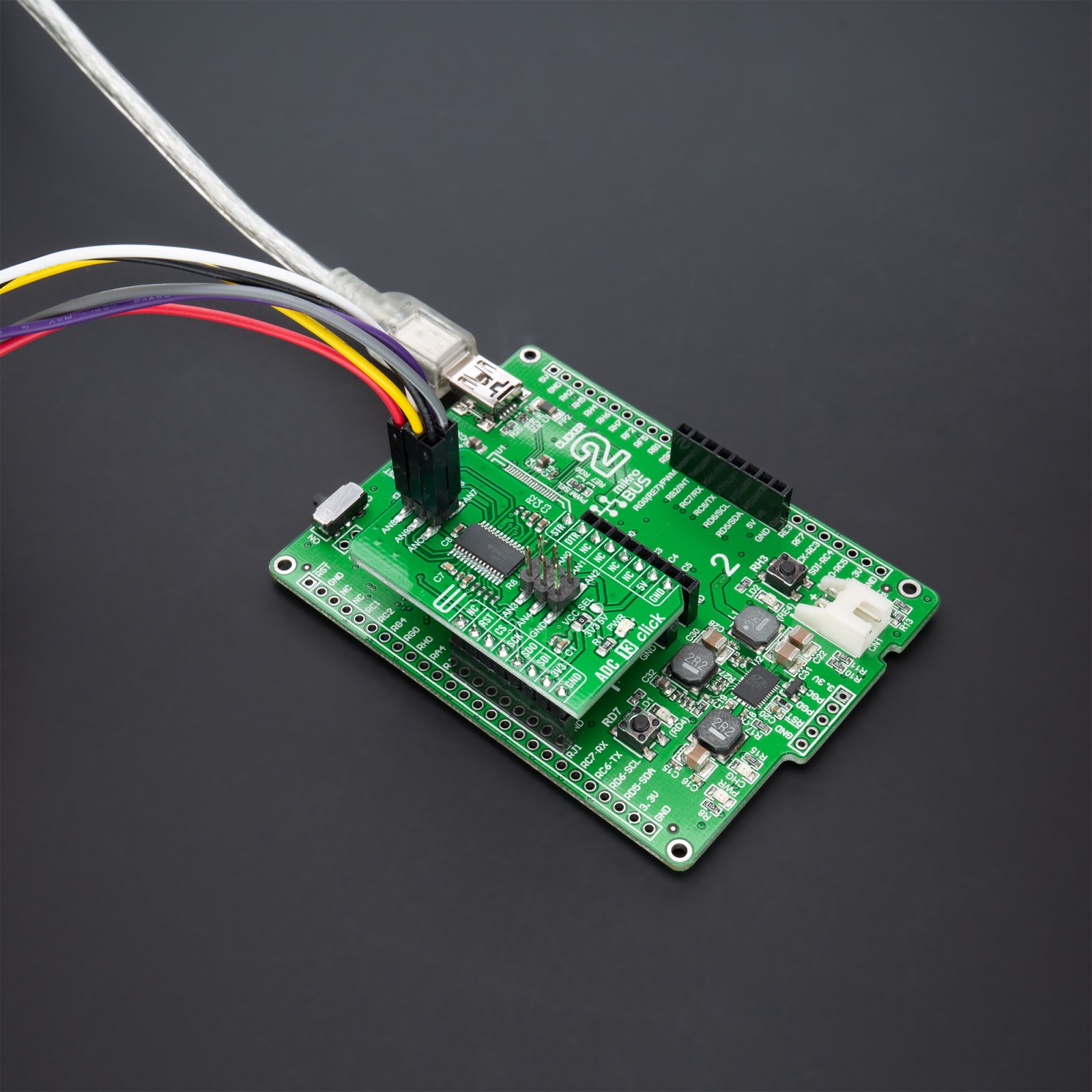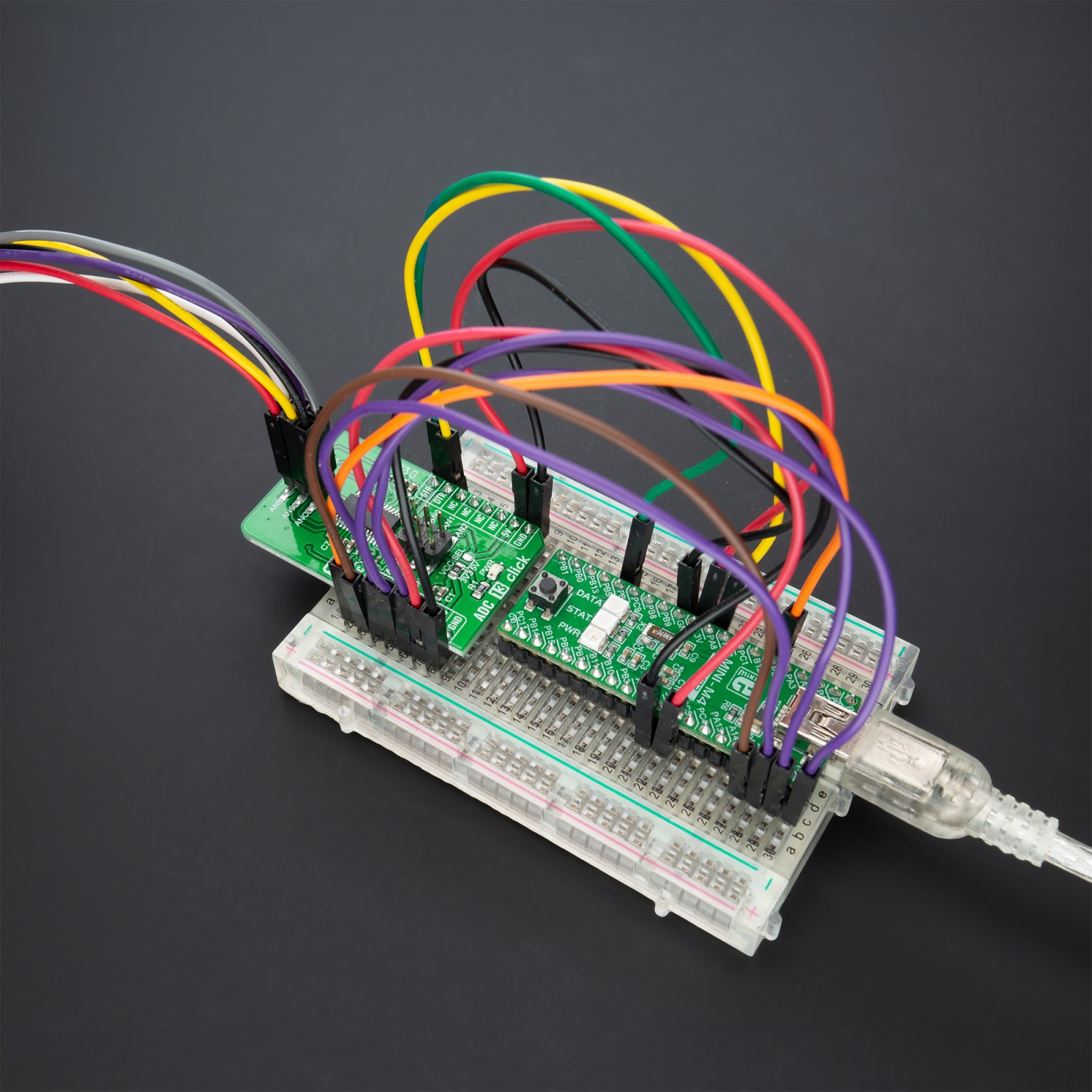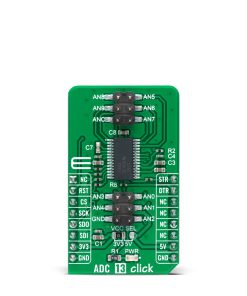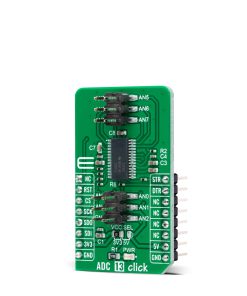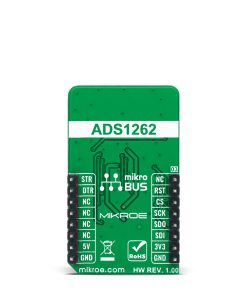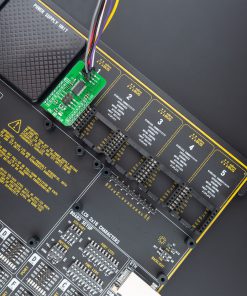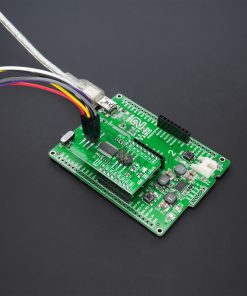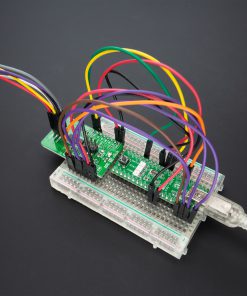ADC 13 Click
R1,150.00 ex. VAT
ADC 13 Click is a compact add-on board that contains a high-performance data converter. This board features the ADS1262, a 32-bit, high precision, 38-kSPS, analog-to-digital converter with programmable gain amplifier and voltage reference from Texas Instruments. This ADC consists of a low-noise CMOS PGA (gains 1 to 32), a ΔΣ modulator, followed by a programmable digital filter. The flexible analog frontend (AFE) incorporates two sensor-excitation current sources suitable for direct RTD measurement. A single-cycle settling digital filter maximizes multiple input conversion throughput while providing 130dB rejection of 50Hz and 60Hz line cycle interference. This Click board™ offers complete, high accuracy solutions for the most demanding sensor applications, including weighing scales, strain-gauge sensors, thermocouples, and resistance temperature devices (RTD).
ADC 13 Click is supported by a mikroSDK compliant library, which includes functions that simplify software development. This Click board™ comes as a fully tested product, ready to be used on a system equipped with the mikroBUS™ socket.
Stock: Lead-time applicable.
| 5+ | R1,092.50 |
| 10+ | R1,035.00 |
| 15+ | R977.50 |
| 20+ | R940.70 |

